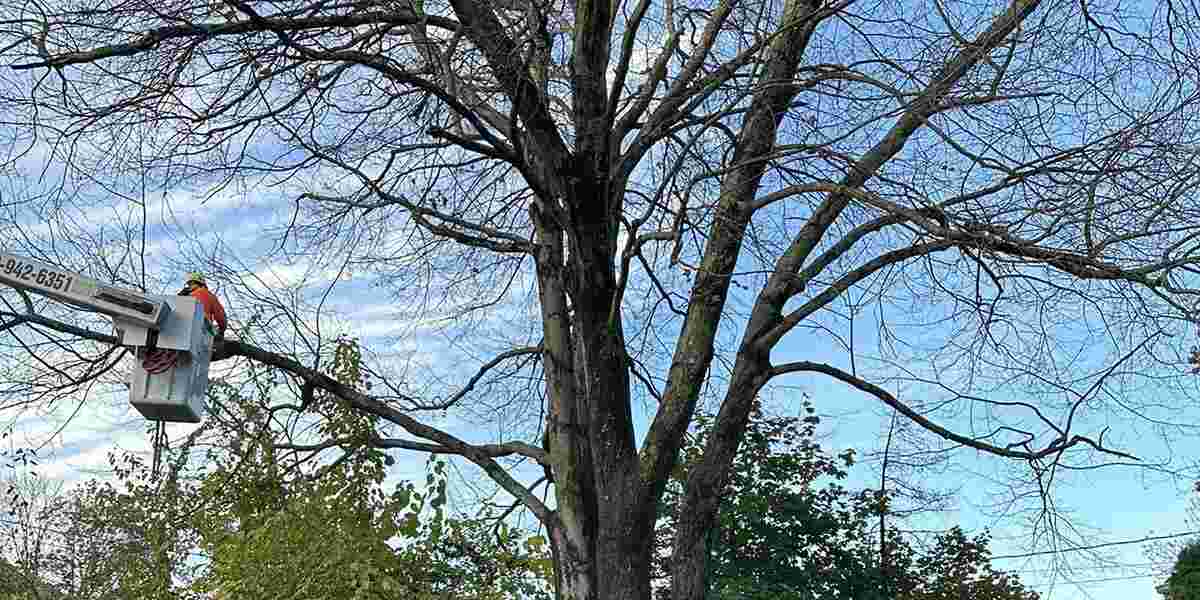Bad pruning cuts can not only make your tree look ugly, but they can also harm it. In this post, GM 2 Tree Service, Bristol’s trusted tree services, explains more about common pruning mistakes and how you can avoid them.

Pruning Without a Set Goal
You should never trim a tree simply because you think you should. Instead, develop a clear strategy before you begin. What do you want to achieve? For some people, this is to clean up the tree. For others, reducing the size of the canopy or increasing a fruit harvest is more important.
Don’t make any pruning cut without considering its impact. No expert ever removes the branch before they carefully consider what they wish to achieve.
An Improper Pruning Cut
Contrary to popular belief, there’s more to trimming a tree than lopping off branches as you like. Bad pruning cuts make it more difficult for the tree to heal and leave it vulnerable to disease and pests.
For example, making flush cuts, where you cut away the branch collar, is one of the worst mistakes when caring for trees. The reason is that the tissue in the collar helps seal the wound quickly, speeding up healing. By cutting too close to the trunk, you damage the bark and leave an ugly wound.
Stub cuts go the other way in that you leave too much of the branch in place. The danger here is that the decay will spread from the outside in because the wound’s too far from the branch collar to heal correctly.
Heavy Pruning in Summer
Trees work hard during the growing season to store enough resources to last them through winter. Bad pruning cuts at this time are a triple threat because they:
- Remove foliage the tree needs to create food for the winter. The plant then uses some of its dwindling resources to send out shoots to replace the missing sections of the canopy.
- Create open wounds at a time when pests and diseases are most prevalent.
- Increase the risk of sunscald by denuding the plant and exposing the trunk. The more branches you remove, the higher the chance of the tree getting sunburned.
Using Dull or Dirty Tools
You should keep your tools sharp and clean for the best results. A honed blade slices straight through the wood without leaving rips in the bark or jagged edges. Do wipe down the blade before you start to remove bacteria on it.
Topping a Tree
Think of topping like decapitating a tree. It’s almost always fatal and even if the tree survives, it won’t be the same. Not only does this practice cause structural instability, it also leaves the tree vulnerable to disease.
What’s more, it can be counterproductive if you want to shorten the plant. Cutting the canopy off sends the tree into emergency mode. This means that it sends several fast-growing shoots to replace the foliage. These will quickly exceed the initial tree height.
Over-Pruning
If you cut away more than a third of the tree’s foliage in any season, you risk killing it. You increase this risk by choosing the wrong times to prune. It’s better to trim your tree when it’s dormant and merely remove dead wood at other times.
Contact the Experts
Don’t think you can tell bad pruning cuts from good ones? Learning how to care for a tree takes time, so don’t feel bad if you don’t have the skills yet. Call GM 2 Tree Service at (203) 527-6237 for expert advice and to schedule a professional consultation today!
